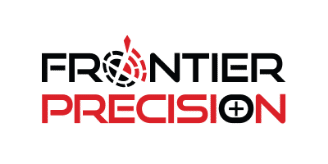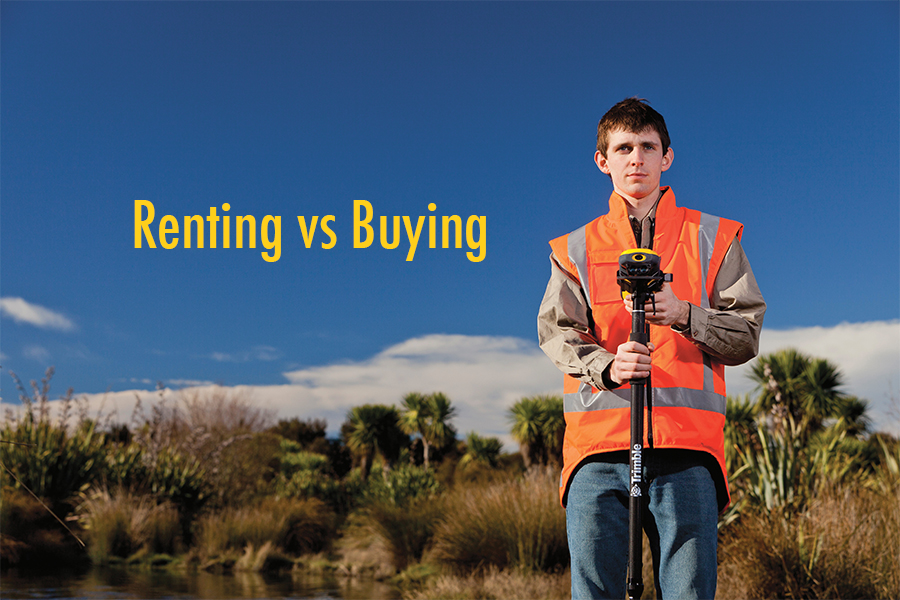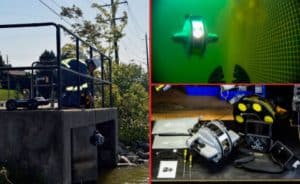Rent or Buy: The Trimble GPS Debate
Before coming to work at Frontier Precision I coordinated field crews where we used Trimble GPS equipment for field data collection. We used the equipment daily from May to September, but then most of it sat on a lonely shelf during the off-season. Each spring we went through the commotion of verifying everything was still there and still turned on, how many batteries needed replaced, whether the software was still supported, and whether we had sufficient gear to equip all the crews for that summer’s field effort. It was always rushed and you get a little rusty on things like updating operating systems, GNSS firmware, and software when you only do it once a year. You also get that itchy feeling when you find out you have to go to the project manager and surprise them with, “Oh by the way, I know this wasn’t in the budget but we need to update two of our software licenses, replace a couple batteries, and get another GPS unit and it’s gonna cost a few thousand bucks.” When it comes to resource-grade GNSS equipment and software, particularly anytime you want sub-meter or better accuracy, the systems come at a cost that requires some thought behind how you budget for them. This begs the question, when does it make sense to rent and when does it make sense to buy?
| Reasons to Rent |
Reasons to Buy |
| Convenience |
Long-term or frequent need |
| Immediate need |
Appropriated funds |
| Short-term, seasonal, or intermittent need |
Adequate in-house support |
| Ease of billing – operating expense vs. capital outlay |
Organizational requirements |
| Test-drive a new system |
Gear is always on-hand |
| Avoid annual costs of ownership |
Long-term cost savings |
| Always run current hardware and software |
|
Renting GNSS or GIS data collection equipment is often the best and lowest cost solution to complete a project. The convenience of renting alone may be reason enough to do it, but there are some common themes I have observed which drive users to rent versus buy such as short-term needs, ease of billing, trying out a system for the first time, and avoiding some of the hassles of ownership. You can always run the latest and greatest hardware and software systems and you can even reserve a rental online. There are definitely a lot of reasons to make an outright purchase of a field data collection system as well. Besides the point at which buying is cheaper than renting, some government organizations simply won’t allow renting, purchasing usually makes sense for long-term projects, and many organizations have in-house expertise to maintain and support the hardware and software components of a quality field data collection system. Here are a few questions to consider when making this decision:
How long AND how often will I need this equipment?
Don’t forget both parts of that question. You may think you need a unit for a year, but perhaps you will only use it for one full week out of each month. In this case, renting will save you a lot of money if you can just have the equipment shipped to you each month for a one week period. However, if you’ll be using the equipment regularly throughout that year, buying is the better choice. If you only need a unit for two days, two weeks, or even two months, without a question, rent! On a Trimble GeoExplorer Series unit (GeoXH, GeoXT, or Geo 7X) and most other devices, the tipping point where the cost of renting is the same as buying usually falls somewhere between six and nine months.
Is my need project-based or does my organization need regular access to GPS gear?
If you are going on vacation, you probably ought to get a hotel rather than buy a house at your destination, but if you’re going to move somewhere for a few years it’s a good time to buy. If your organization has a regular and consistent need for a mapping system on various projects over a long period of time, you probably ought to buy a system. But if you schedule one project or land one contract where you need high-accuracy locations, you’ll likely save yourself some time and money by renting. Even if the project lasts six months or an entire field season, you should look into renting.
How am I paying for this?
If our annual budget is approved and you get funds to purchase a mapping system this year, buy it. If you are working on a time and materials basis on a contract or on a project basis, the ease of billing for the rental as an operating expense and not having to purchase the required software (typically included with the rental) make the decision easier. Renting for longer-term projects with monthly invoices may offer you the flexibility you need to fund the right equipment for the job.
Do I have adequate expertise and support within my organization if we purchase?
Consider who will be using the equipment in the field and who will be supporting it in the office. If resource staff will be administering and operating the equipment as well as processing and managing the data, renting will be worthwhile as Frontier Precision offers free technical support with rentals and can help coordinate with both resource and GIS staff at your organization. If you have a dedicated GIS staff member or GPS coordinator who knows the technology well and is comfortable with software, OS, and hardware relationships as well as data management, you’re in a much better position to buy. Either way you go, make sure you have access to excellent technical support.
Am I prepared to budget for recurring hardware and software maintenance costs?
When you buy a new system you purchase hardware and software and perhaps some accessories. Trimble equipment typically includes a one year hardware warranty and one year of software maintenance (i.e. software updates) from the time of purchase as well. TerraSync, GPS Pathfinder Office, Trimble Positions, or ArcPad software will typically have a couple releases a year to keep up with newly released hardware, Microsoft operating system updates, added features, changes to GNSS constellations, bug fixes, etc. There is a software maintenance fee associated with each software program that ranges from $100-$300 per year. Extending your hardware warranty each year that will cost about the same. The nice thing is that these fees are optional and you still own your equipment and software whether or not you purchase the extensions, but eventually Microsoft Windows 13 will come out and you may run into compatibility issues. If your hardware fails over time and your warranty has lapsed, you’ll have the repair costs as well. If it’s a rental, you pay nothing for manufacturer defects or damage you didn’t cause. When you rent, Frontier Precision incurs these costs, keeps the software up to date on the handhelds, and provides you with office software if you need it, all included under your rental fee. Depending on your need, however, you may still save a lot of money in the long run if you purchase and keep your maintenance up to date.
How soon do I need my equipment?
If you need the gear set up and ready to go in the field tomorrow, you need to rent. Frontier Precision loads the software and ships it wherever you need it throughout the US. We can even load your data for you. If you don’t need the gear for a couple weeks, you’ve probably got time to place an order and have it delivered and set up with your own stuff.
Take a good look at the question of convenience as well as cost when you are deciding how to gear up for your field efforts. You may be surprised to find renting to be more economical or accommodating than you thought for certain projects. Budgeting for seasonal rental costs might be more appealing to a project manager than discovering surprises when you dust the gear off in April like I did.
View details on Frontier Precision’s rental program! We also rent Juniper Systems handhelds, Laser Technology lasers, MobileDemand xTablets, Ricoh GPS cameras, Intuicom RTK Bridges, and Pacific Crest XDL Rovers.







